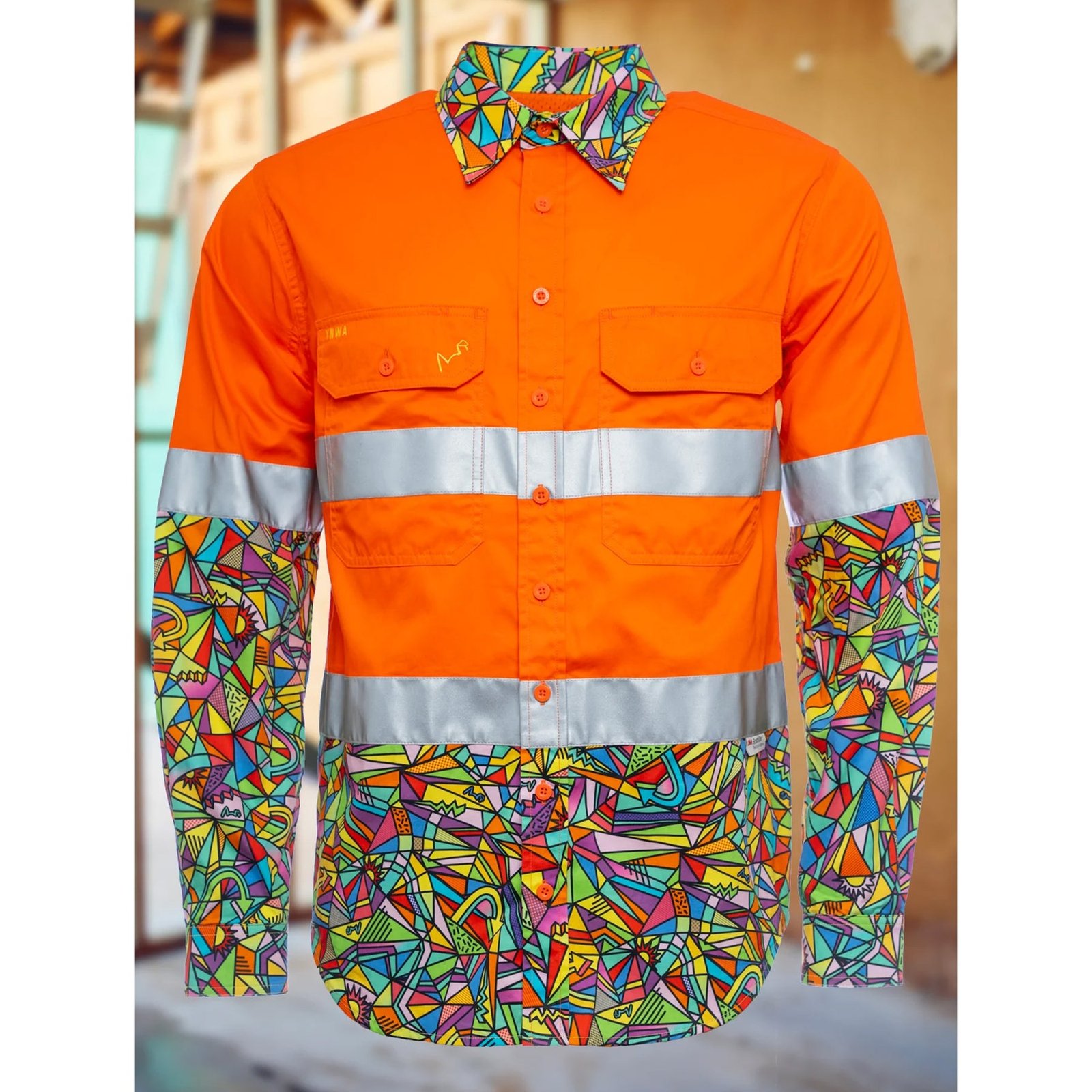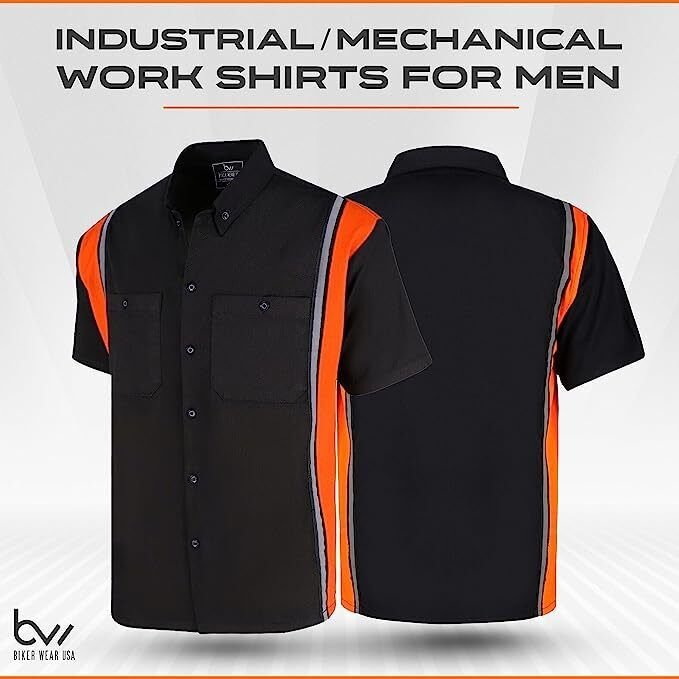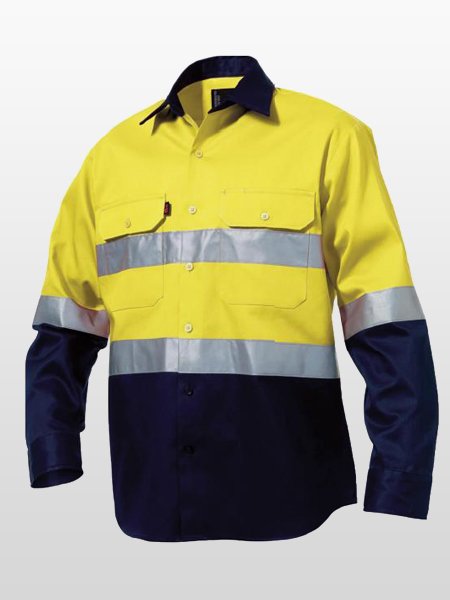Chưa phân loại
Work Shirts – Essential Attire for Every Profession and Task
When it comes to choosing the right apparel for your job, work shirts are indispensable. They serve not only as functional clothing items but also as a representation of professionalism and safety in various occupations. In this article, we will explore the different types of work shirts, their features, and how they fit into the larger category of working clothing.
Work Shirts

The term “work shirts” encompasses a wide range of options that cater to specific industries, work environments, and individual preferences. Whether you’re an office worker, a construction laborer, or a chef, there is a suitable work shirt for you.
Fabric Choices
One of the most crucial aspects when selecting work shirts is the fabric. The choice of material can significantly impact comfort, durability, and even safety.
Cotton is perhaps the most common fabric used in work shirts due to its breathability and comfort. It allows for ample airflow, making it ideal for warm working conditions. However, cotton can absorb moisture, which might be less than desirable in certain environments.
Polyester and blends are popular alternatives. They offer increased durability and resistance to wrinkles and stains, making them an excellent choice for jobs that require long hours and heavy-duty usage. Additionally, moisture-wicking technologies can keep the wearer dry, enhancing overall comfort during strenuous tasks.
Different Styles and Fits
When it comes to styles, work shirts vary widely. From button-down shirts to polos and crew necks, the options are plentiful.
Button-down shirts provide a polished look, perfect for those in corporate settings or customer-facing roles. These shirts usually come with a variety of colors and patterns, allowing for self-expression while maintaining a professional appearance.
Polos offer a more casual yet still professional look. Often preferred by employees in retail or service industries, these shirts strike a balance between comfort and presentation.
Crew necks and t-shirts, although considered less formal, are widely accepted in many workplaces, especially in trades and manual labor. When combined with other pieces of working clothing such as jackets or safety vests, they can create a practical outfit.
Features to Consider
In addition to fabric and style, several key features should be taken into account when selecting your work shirt.
Look for shirts with reinforced seams if durability is a priority; this feature can prevent tearing in high-stress areas. Pockets can also add functionality—having a chest pocket for tools or pens can make your day-to-day tasks easier.
High-visibility options are available for those in hazardous environments. These shirts are often bright in color, sometimes paired with reflective materials to enhance visibility during low-light situations.
Work Shirts

As we further delve into the world of work shirts, let’s discuss their significance in fostering morale and teamwork within organizations.
Role in Team Identity
Work shirts can act as a unifying factor among team members. When everyone wears similar work shirts, it fosters a sense of belonging and camaraderie.
Many companies opt for branded work shirts that feature their logo, creating a professional image and reinforcing brand identity. This practice continues beyond mere aesthetics; it instills pride among employees and enhances their connection to the organization.
This sense of unity can positively influence workplace morale. Employees often feel more motivated when they are part of a cohesive team, which can lead to increased productivity and job satisfaction.
Comfort and Functionality
Comfort cannot be overstated when it comes to work shirts. An uncomfortable shirt can distract from the work at hand, leading to decreased efficiency.
Employers must recognize the importance of providing quality work attire that accommodates physical activity. For example, shirts designed for construction workers might feature stretchable fabrics that allow for greater mobility, while office workers might benefit from breathable materials that keep them comfortable throughout long meetings.
Another critical aspect of functionality is customization. Some companies allow employees to select their preferred styles, fits, and features within the guidelines of the dress code. This flexibility can result in happier employees who feel empowered in their clothing choices.
Seasonal Adaptations
Seasons dictate the appropriateness of specific work shirts. During colder months, layering becomes essential for staying warm, so long-sleeved shirts or even thermal options may be required.
Conversely, summer months may necessitate lighter fabrics to avoid overheating. Companies might consider implementing a dress code that allows short sleeves or moisture-wicking options for outdoor workers during hotter temperatures.
Adaptation doesn’t stop at changing seasons; different weather conditions also call for specialized work shirts. For example, waterproof or water-resistant materials may be necessary for jobs involving outdoor exposure or wet conditions.
Safety Vest
In conjunction with work shirts, safety vests play a vital role in ensuring worker safety, particularly in high-risk environments.
Importance of Visibility
Safety vests, often made from bright fluorescent materials, are fundamental in enhancing visibility. In construction sites, road maintenance, and other hazardous jobs, wearing a safety vest can be a matter of life and death.
These vests typically feature reflective strips that catch light and improve visibility during low-light conditions. This feature is particularly useful for workers who may be on or near roadways where vehicles are present.
Regulatory Standards
Safety vests often adhere to regulatory standards set forth by organizations such as the Occupational Safety and Health Administration (OSHA). These regulations ensure that safety gear meets specific visibility requirements to protect workers adequately.
Companies are responsible for equipping their employees with compliant safety vests. Failing to do so can lead to hefty fines and, more importantly, jeopardize employee safety.
Combining Work Shirts with Safety Vests
A well-coordinated outfit consisting of work shirts and safety vests can enhance not only safety but also professionalism. Many companies now design work shirts that integrate seamlessly with safety vests, offering both comfort and compliance.
For instance, some work shirts come equipped with pockets specifically designed to accommodate safety vest attachments. This level of consideration adds another layer of functionality to working clothing.
Personalization Options
Just like work shirts, safety vests can also be customized. Organizations can incorporate logos or branding on safety vests to maintain a professional image while ensuring that all appropriate safety measures are met.
Custom safety vests can boost teamwork and promote a unified front, making employees feel valued and connected to the company’s mission.
Working Clothing

Beyond just work shirts, the concept of working clothing extends to a multitude of garments designed to ensure comfort, protection, and professionalism in various work settings.
Comprehensive Workwear Solutions
Working clothing encompasses a wide array of items, including pants, jackets, and footwear, all tailored for specific job functions.
It’s important to recognize that each piece of clothing serves a unique purpose—it’s not merely about looking good but also about functionality. For instance, cargo pants with numerous pockets can complement work shirts, allowing workers to carry essential tools easily.
Material Innovations
Advancements in fabric technology have led to the development of specialized working clothing that caters to varying needs.
For instance, moisture-wicking materials help regulate temperature, while flame-resistant fabrics provide much-needed protection in industrial settings. Employers should consider investing in such innovative clothing to ensure their workforce remains safe and comfortable.
The Role of Personal Protective Equipment
Personal protective equipment (PPE) is an essential facet of working clothing. Items such as helmets, gloves, and eye protection are crucial for safeguarding against potential hazards.
Employers are legally obligated to provide necessary PPE to workers in high-risk environments. Failing to do so can lead to severe consequences, both for the business and the employees involved.
Fashion Meets Function
While practicality should always take precedence, it’s worth noting that fashion trends have begun influencing working clothing.
Stylish work shirts and pants are becoming increasingly available, allowing professionals to maintain a fashionable appearance while adhering to dress codes. This modern shift can enhance employee satisfaction, making them feel confident and empowered in their roles.
FAQs

What are work shirts?
Work shirts are specialized garments designed for use in the workplace. They prioritize functionality, durability, and comfort, making them suitable for various professions.
How do I choose the right work shirt?
Consider factors like fabric, fit, style, and features. Assess your work environment and personal preferences to determine what type of work shirt best suits your needs.
Are safety vests necessary for all work settings?
While not every workplace requires safety vests, they are essential in high-risk environments such as construction sites or road maintenance to improve visibility and protect workers.
Can I customize my work shirts and safety vests?
Yes, many companies offer customization options for work shirts and safety vests, allowing you to add logos or branding for a professional appearance.
What other types of clothing should I wear at work?
Working clothing includes not just work shirts but also pants, jackets, and personal protective equipment (PPE) to ensure safety and comfort in various work settings.
Conclusion
In the ever-evolving landscape of work environments, work shirts remain a cornerstone of professional attire. Beyond being simple garments, they encapsulate comfort, safety, and professionalism, impacting employee morale and productivity. By understanding the various fabric options, styles, and features available in work shirts, as well as their integral relationship with safety vests and broader working clothing, both employers and employees can make informed decisions that contribute to a more efficient and secure workplace. Embracing quality work shirts and working clothing ultimately elevates the working experience, reflecting not only on individual performance but also on organizational success.




